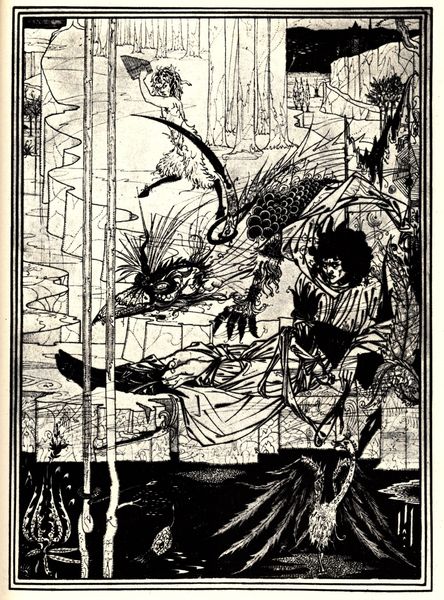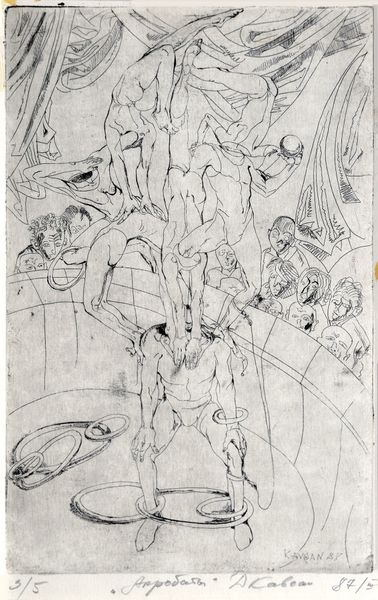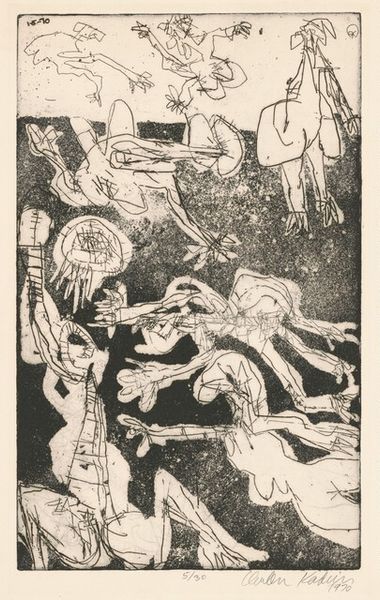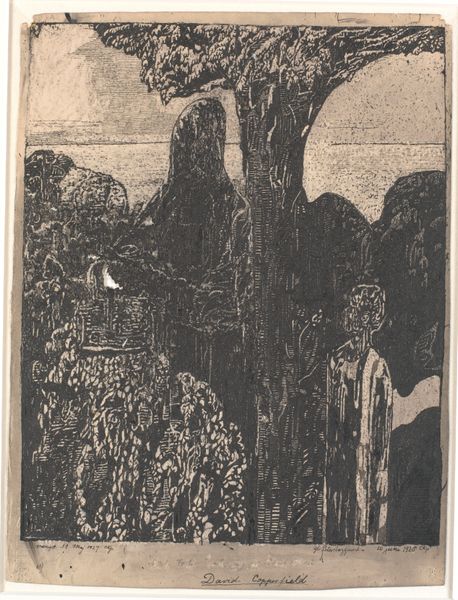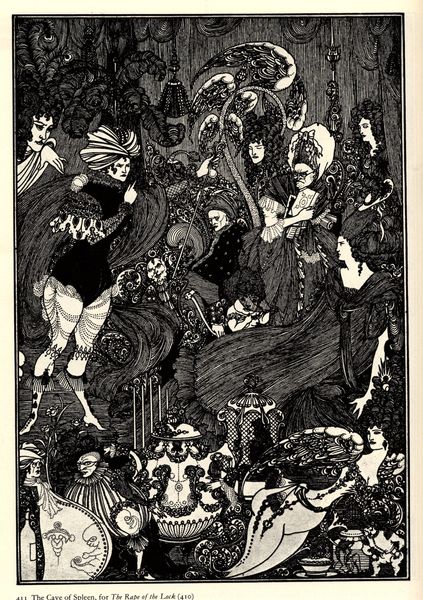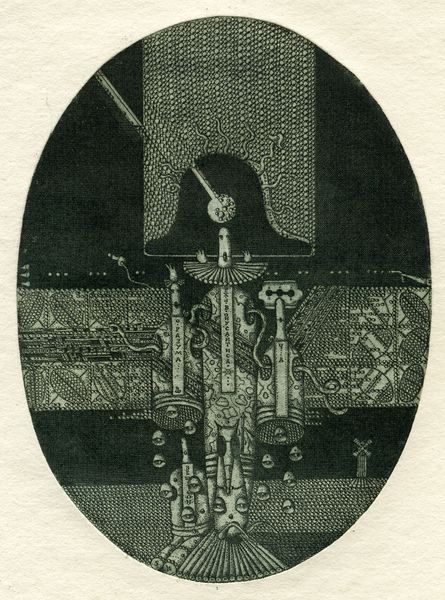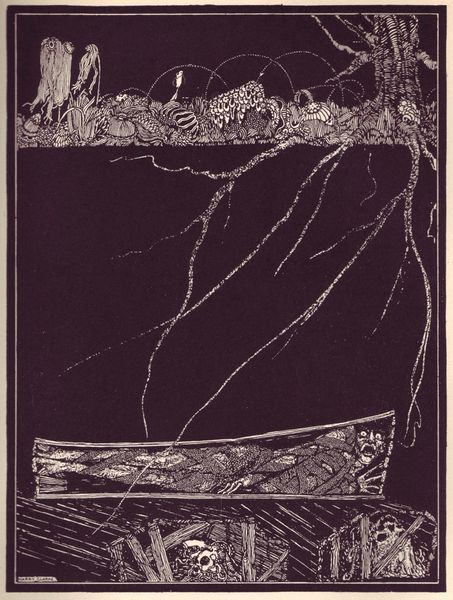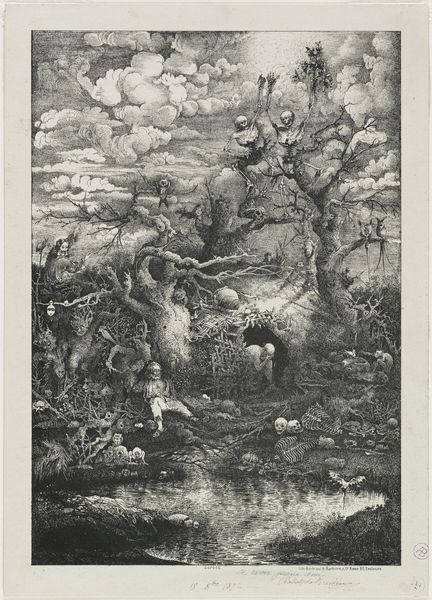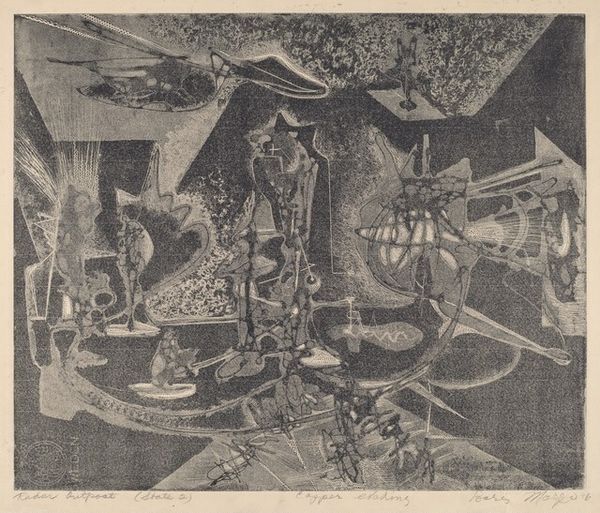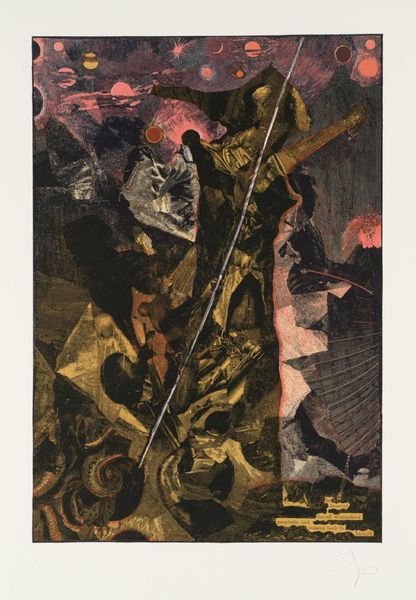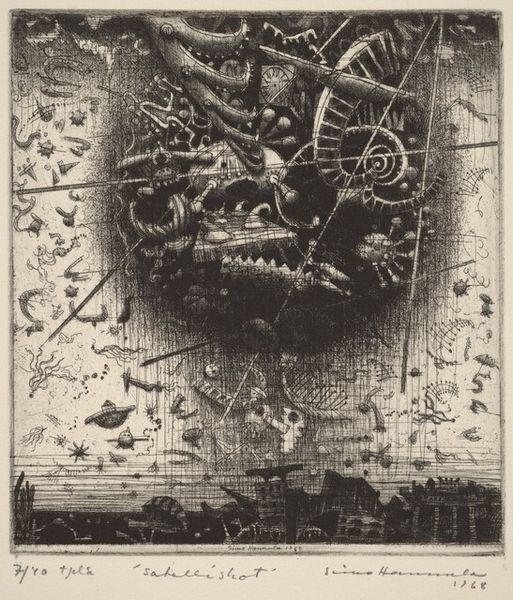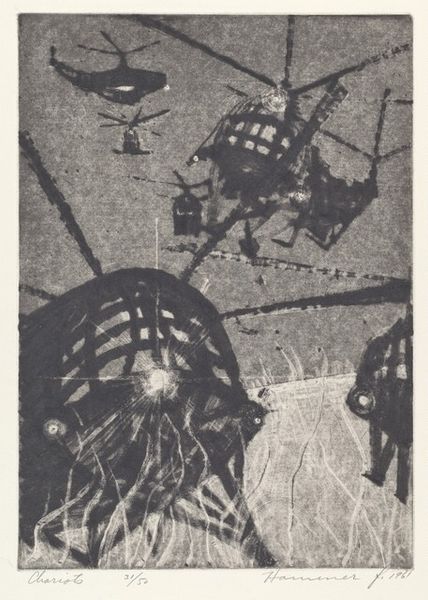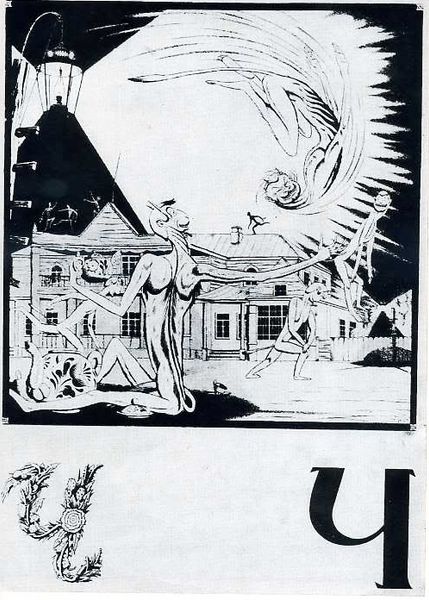
drawing, ink, pen
#
multiple drawing in one
#
drawing
#
art-nouveau
#
narrative-art
#
mechanical pen drawing
#
pen illustration
#
landscape
#
junji ito style
#
figuration
#
linework heavy
#
ink
#
sketchwork
#
pen-ink sketch
#
line
#
symbolism
#
pen
#
storyboard and sketchbook work
#
graphic novel art
#
doodle art
#
monochrome
Copyright: Public domain
Curator: Aubrey Beardsley created this pen and ink drawing in 1893, titled "Illustration to 'Siegfried', Act II." It depicts a scene from Wagner's opera, a work that certainly preoccupied many artists of the time. What's your initial impression? Editor: There’s an immediate sense of heightened theatricality and darkness. The stark black and white contrast creates an unsettling mood, a dreamlike atmosphere tinged with something sinister. Curator: Absolutely. The monochrome palette intensifies the symbolism at play. Beardsley often incorporated very specific motifs, drawn from mythology and folklore, that lend a mythic quality, don't you think? Editor: Undeniably. Look at how Beardsley frames Siegfried, poised with his instrument, a conduit between worlds it would seem. The sinuous lines, the almost feverish detail... It’s as if the landscape itself is an extension of his internal psychological drama. But there’s also a very mannered quality; it speaks to fin-de-siècle anxieties and decadent tastes. Curator: And Beardsley’s deliberate use of graphic elements reinforces that sense of carefully constructed symbolism. The way the plants frame Siegfried, almost predatory in their elegance, subtly hinting at lurking dangers and temptations in the opera. Editor: Which gets back to the social context. Beardsley was very deliberate about unsettling Victorian sensibilities. He challenged prevailing social norms, sexuality in particular. And the Siegfried story itself is about transformation, power, and perhaps, societal upheaval, as the old order of the Gods makes way for humanity. The politics are implicit, though no less impactful. Curator: And that speaks to Wagner's own complex place in European culture at the time. This piece feels both timely, commenting on cultural movements, and timeless through it’s iconography. It invites viewers to engage with its historical context, of course, but the visual language is compelling in its own right. Editor: A masterful blend of myth, politics, and personal expression indeed. Thank you for those insights. Curator: A pleasure, and thanks for bringing to light that deeper historic angle!
Comments
No comments
Be the first to comment and join the conversation on the ultimate creative platform.
